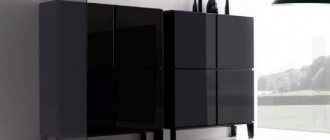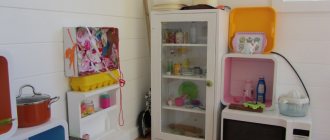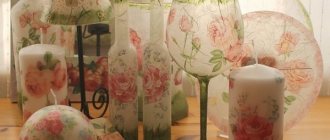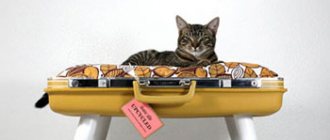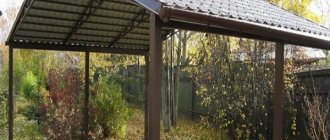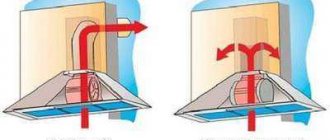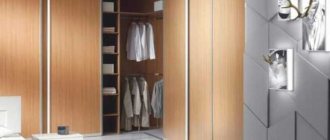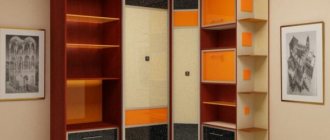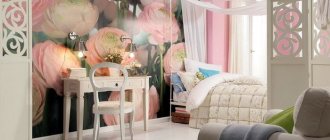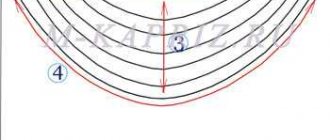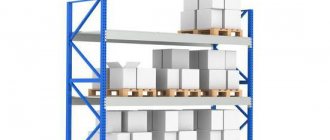Photos of dog enclosures Not many owners are interested. Dog owners do not consider this room a necessary structure for the dog’s life. This attitude has developed for the following reasons:
- The owners do not see the need to install an aviary in their yard.
- There is a false belief that a dog feels worse in an enclosure than at home.
- Greedy owners do not want to spend a lot of money on the construction and installation of a comfortable, secure fence.
- It is mistakenly believed that an enclosure and a booth are a restriction on the freedom of an animal.
An aviary is a small fence, up to 10 square meters in size. It serves to protect the animal from unfavorable factors: wind, rain, precipitation, and is not at all a restriction of freedom for it.
What can a dog enclosure look like?
The first thing you have to do is determine the type of future enclosure. This issue is partly resolved according to the region where the country house is located. If construction is necessary in the southern region, then the place for the dog can be fenced with a canopy from the sun. But for the middle zone, you should take care of building a booth. In the northern regions, the enclosure must be equipped with a winter road.
Once you have decided on the type, you need to calculate the size of the enclosure, which will depend on the free space on the site and the breed of the pet.
Aviary standards
Many or few? This question will torment the owner of a four-legged friend during the first stage of construction. To bring some clarity, you need to know the minimum dimensions that can be limited to enclosures for dogs:
- At least 6 m2 for pets with a height at the withers of up to 50 cm.
- At least 8 m2 for pets with a height at the withers of up to 60 cm.
- At least 10 m2 for pets with a height at the withers of more than 60 cm.
These parameters should be used as a starting point when choosing the optimal space for a fenced area. To these data you need to add the number of dogs that will live in the enclosure. If you plan to have more than one friends, then you need to add at least 50% of the free space for each.
General structure of a dog enclosure
An enclosure is a place where a dog should feel protected. If this condition is not met, the dog becomes embittered and anxious, and may even attack its owner.
As you know, the pen should suit the size of the dog. Namely:
- For small breeds there are pens with an area of up to 6 square meters.
- For medium-sized ones - up to 10 square meters.
- For large ones - over 10 squares.
Any aviary of any size can have:
- one open wall;
- two open walls;
- three open walls.
At least one wall of the pen must be blank in order to protect the dog from wind, precipitation and give the animal some kind of “protection”.
Any dog enclosure must have at least one “blank” wall so that the dog feels comfortable and safe inside.
Open walls mean structures made of:
- chain-link mesh;
- welded mesh;
- forged elements;
- metal pipes;
- from iron rods.
Also, all enclosures can be divided into:
- covered (having a roof - the dog can stay in such a pen 24 hours a day at any time of the year);
- open (without a roof - the animal should not spend all its time here. For example, in winter the area inside will be constantly covered with snow, and regularly clearing snow debris is not very convenient for the owner);
- partially covered (one half is covered with a roof, the other is left open so the dog can soak up the sun).
Any enclosure is divided into zones:
- Sleeping and resting area - a booth or bed for the dog is installed in it.
- Food area - here there is a bowl for food and a container with clean water for drinking.
- The active zone is all the remaining space where the dog can frolic for his own pleasure.
If you schematically imagine an enclosure in the form of a rectangle with an aspect ratio of 2:3, then the booth or bed should be in the upper right or left corners, with the food area next to it.
Any dog enclosure has three zones: sleep, food and activity.
Everything else is space for the dog to spend active time.
Another question that a loving owner will definitely ask is where to place the enclosure. It must be installed in the front part of the yard at a distance of 2–3 meters from the fence. This is, first of all, necessary for the dog itself. She will not be constantly nervous about people passing by and cars passing by. It is desirable that the pet has a full view of the yard and house from the pen. This way, the four-legged guard will be able to fully realize his “professional responsibilities.”
The floor in the enclosure can be:
- sandy (the owner specially fills the area inside with fine sand);
- earthen (the floor inside the pen is no different from the rest of the yard);
- concreted (the dog’s owner makes a foundation at an angle (so that moisture does not “stand” but drains), fills the floor with concrete, and places wooden boards on top to prevent the development of rheumatism in the pet).
Professional dog handlers recommend that a loving and caring owner choose the third option when building an enclosure (even if the enclosure will only be used in the summer). Sand will get stuck in the animal's fur and get into its food, eyes, and nose. The ground is too cold and does not always absorb urine and precipitation. Concrete and wood-treated floors are easier to clean. If you put insulation under the boards (expanded polystyrene, foam boards, foam), the structure can be safely used in the cold season without risk to the dog’s health.
The advantages of using enclosures are obvious:
- The dog is not chained, which means it feels free and trusts its owner.
- The dog does not shed at home, the owner gets rid of hairballs on furniture and clothes.
- The animal knows where its place is and feels safe, which affects its behavior.
Remember one more rule: when building or purchasing a booth to place it inside the enclosure, measure the dog: from nose to tailbone; from the withers to the front legs. Add 15 centimeters to the obtained values. These are the length and height parameters that a dog house should be. Use this information to build or purchase a kennel.
Materials for building an enclosure
When the size of the future structure has been determined, it is time to move on to procurement activities. But first you need to decide on the materials from which the dog pen will be made. And here too there is plenty to choose from.
The main materials for building a do-it-yourself dog enclosure are:
- tree;
- metal;
- brick;
- concrete.
Wood is the basis for the pet's house and the frame of the fence. This option can be considered classic. In this case, the enclosure itself is fenced with a welded mesh or chain-link stretched over poles. Wooden stands are installed around the perimeter and create space for your four-legged friend.
The use of metal can be combined with wood and brick. In this case, the fence is no longer a mesh, but a lattice. It is attached both between wooden pillars and between brick ones. Also often there are designs with metal stands, which is quite justified from the point of view of the safety and reliability of the entire enclosure.
The use of brick, and in some cases natural stone, is due to purely aesthetic and design considerations. When the area around the house is landscaped in a certain style, it makes sense to build the same paddock. Otherwise, the use of this material will depend only on the taste and intentions of the owner of the country house.
Concrete is used mainly to create the floor of the enclosure. But wood also claims this role, remaining a classic building material. The concrete mixture is also used to construct the foundation for the fence. Therefore, you should not discount it.
Construction
After receiving the project, you should select the material for the roof, blind and front walls. Then it is important to decide on the location.
Now you need to consider step by step how to build an enclosure for a dog with your own hands, so as not to miss anything.
Foundation and decking
The rafters for the foundation will be powerful pipes (4-6 pieces), which should be driven into the ground along the perimeter of the object, or columns of bricks. The remaining space is filled with gravel or expanded clay. The base (screed height from 40 to 70 mm) is poured with a solution of concrete or cement. It is important not to forget to tilt towards the frontal zone.
The wooden flooring is nailed to a special timber frame. Its dimensions correspond to the dimensions of the enclosure. This floor is made from tongue and groove boards because they do not require nails for installation.
Construction and filling of the frame
If the fence is metal, then pipes can be used. They are assembled according to the drawing and fastened using bolts or welding. The same assembly principle applies to wooden supports. The algorithm for their construction is as follows:
- cut the slats to the required length;
- drill holes for fastenings;
- assemble each wall separately;
- treat the wood with fungicide and varnish;
- sheathed with metal mesh;
- drive out the frame;
- one panel is a gate, it needs to be placed on hinges and a latch attached;
- Cover blank walls with a sheet of plywood;
- cover with a roof or horizontal beams.
The metal frame is filled with pre-selected material: a wooden beam or a brick wall. To insulate the back part, pressed sawdust, polystyrene foam, eco- or mineral wool are additionally used.
The front wall is made with one transverse crossbar. If you use a mesh, you need to make sure that it sits firmly on the folds. Any load can break it.
The front wall must be made of chain-link or mesh. In other cases, a grate is made, consisting of welded pipes and rods. Near the gate, two rings intended for feeding should be welded. The turning mechanism opens outwards.
Installation of roof and booth
To work with corrugated sheets or slate, it is necessary to build a wooden frame. Then the roofing sheets are applied one after another. A wooden frame is sheathed with roofing felt or soft tiles, onto which special OSB boards are attached. For safety reasons, you should use self-tapping screws or a closed type of fastening.
Among other things, an awning can be used as a cover. Dense and waterproof fabric is pulled over a metal frame, secured with loops.
The booth is made with a flat roof. As a result, it will become an observation deck for the pet. It is desirable that the structure opens, because then it is easier to clean it. The size of the booth is equal to the length of the lying dog with its paws stretched out.
A few simple steps and your do-it-yourself dog enclosure is ready. This stylish residence will serve as a wonderful place to relax and work for your beloved pet.
Wood flooring or concrete floor
The choice between types of flooring in the enclosure is a very important step. On the one hand, concrete should be the undisputed leader. This material allows you to completely eliminate digging under the fence, which will protect guests from the sudden appearance of a watchdog. But nevertheless, this method also has negative consequences.
In winter, outdoor dog enclosures with concrete floors pose a hidden threat to pets. The fact is that during frost the stone cools greatly. Then the negative temperature is transferred to the dog’s paws. Prolonged exposure to cold from concrete pavement can lead to rheumatism in your four-legged pet.
But wood is a more forgiving material. Having low thermal conductivity, it does not cause such damage to the dog. But he has his weaknesses. For example, poor resistance to fungi and mold, which will accompany the flooring due to the close location of the earth. This scourge can only be combated by using various impregnations and antiseptics.
It is impossible not to say about the earthen field. In this case, no flooring is made, and the dog walks directly on the lawn located inside the fence. But this method is fraught with problems associated with undermining. Four-legged pets are excellent diggers. They will quickly get out and disturb everyone around them. That's why it is necessary to do flooring.
Material selection
It is recommended to make one or two sides of the site completely closed so that there are no drafts. To build such blank walls, you can use the following types of building materials:
- brick;
- foam or cinder blocks:
- wooden beams, panels or boards (thickness from 2 cm);
- concrete slab;
- finished frame made of wood and reinforcement.
Thermal insulation material is coniferous trees. For harsh winters, it is still better to insulate the walls or make them double.
Floor
The flooring in an outdoor dog enclosure should not be cold. This can cause rheumatism in the animal. Therefore, it cannot be made from cement. It is better to use asphalt or concrete. Cover the screed with wooden flooring. The tongue and groove boards are sanded and dried well to prevent mold from developing. Before painting, they should be treated with antiseptic agents. The floor must be sloping. The side zones are slightly higher, and the front and center zones are lower. As a result, water will drain rather than accumulate on the surface.
Any wooden parts should not come into contact with the ground or other base elements. Otherwise, the wood will absorb moisture and rot.
Roof
In the original, the coating should be made inclined or flat. It is forbidden to use ordinary nails to install the roof. It is better to give preference to self-tapping screws or other types of closed fastenings, because the dog can get hurt. The roof of a home enclosure for a dog can be made from:
- wood;
- plastic;
- slate;
- ondulin;
- bitumen shingles;
- profiled sheet;
- roofing felt;
- metal tiles.
It is mounted on a wooden platform, which consists of several boards. This structure allows for heat retention in the building and excellent air circulation.
Front end
The front wall provides the tailed guard with a good overview. The grid is an incomparable option for such observation. It can be made from metal profile pipes with a round or square cross-section. Using a grinder or sandpaper, you need to clean the parts from burrs and rust. The metal surface must be primed and covered with several layers of paint.
The Ministry of Health prohibits the use of powder and galvanized materials. They are harmful to the health of the animal. It is recommended to use screws made of stainless material as fastenings.
On this topic:
We make a dog feeder from simple plastic tanks
Royal Canin dog food line and how to choose the right one...
High-quality and nutritious food for dogs and cats Farmina
Balanced dog food "Brit"
BACK FORWARD 1 of 2
The mesh is a budget option, but it is not always reliable. Under the weight of the shepherd, it may fall out or rupture. Dogs also often chew the wire and pull out their teeth.
Does the enclosure need a roof?
The answer to this question may again be the region where the country house is located. But one thing is clear: the dog must have protection not only from rain, but also from the scorching sun. This means that it is necessary to make a roof for the enclosure. At least over most of it.
The issue of choosing a material can be approached in the same way as when installing a roof for a house. You can lay ondulin, soft or regular tiles. The choice depends entirely on the capabilities of the site owner. The main rule should be the following: the roof should not be noisy. This is important for the dog's peace of mind. When it rains, drops can knock loudly on the roof and irritate the animal. Especially if bad weather happened at night.
The design of the roof can also be left to the discretion of the designer. Typically, shed decks are made, which do an excellent job of draining water falling from the sky. But you can also find more complex projects, when the pet pen resembles a real house. Like, for example, in this photo of a dog enclosure
The door is an element of particular importance
You can only enter and exit the fence through the opening. It must be included in the design of the enclosure. But the entrance should not remain open, otherwise the dog will simply run away. Therefore, it is necessary to install a door leaf in the fence.
There is one rule for this design element. The door should open into the enclosure itself. This is a safety requirement that some owners of four-legged pets violate. In addition, the door leaf must have a strong lock. The entrance must be kept locked so that the pet does not leave its enclosure without the knowledge of the owner.
The lock mechanism should be easy to close both from the outside and from the inside. This circumstance will allow the owner to exit from behind the fence without any problems, even if the passage closes. The handle is installed at the discretion of the owner.
The door design is a rectangular frame. In the center, the canvas is reinforced with an additional spacer on which a lock can be attached. The material for the door is metal or wood. The choice depends on the overall design of the enclosure. Often a welded grille is used as a door. But this option is usually installed on the same fence.
Feeder device
To quickly and safely feed your four-legged friend, you will need to install a feeder. This element must be thought through before making an enclosure for a dog. There are always several feeder design designs to choose from. But the most optimal one will be one where the dog cannot get out and will receive a bowl of food and drink.
This device can be manufactured not only with a lattice fence, but also using a mesh. In this case, it is necessary to add additional bars to the wooden frame. This will create a small frame into which the rotating device of the feeder will be inserted.
If there are several dogs in the enclosure, then the places for eating and drinking should increase accordingly. The main thing is to provide the pets with comfortable conditions, and at the same time the ability to quickly restore order so that the inside of the fence is clean and dry.
Tips for selection and placement
Before purchasing or making an enclosure yourself, you need to decide on its future location. There are also several points that are important to consider:
- There should be no heating devices (batteries) or various household appliances in the immediate vicinity of the structure.
- The fence must be protected from direct sunlight and drafts. It is better if it is located in the back of a large room.
- They try to position the structure so that the animal, while in it, can observe most of what is and is happening in the room.
When choosing a design, you must pay attention to its safety:
- The manufacturing material must be harmless and in no way toxic.
- There should be no protruding parts or elements with sharp corners on the frame, walls and doors of the fence.
It is important to maintain cleanliness in the enclosure, since dirt not only causes an unpleasant odor in the room, but contributes to the occurrence of various diseases in animals
- The floor of the enclosure cannot be left uncovered; it must be covered with cardboard, linoleum, a blanket, plywood or chipboard (only in the area where the diaper is the toilet, nothing needs to be laid).
If the dog's owners have not thought in advance where to put the enclosure, then, after its construction, they will have to look for a place to install the structure . And it’s not at all a fact that there will immediately be a place for it or that it will fit into the interior. And in this case there are several tips:
- The metal fence is made of mesh and does not have a roof. It is unlikely that such an enclosure can be camouflaged in any way. But if you take this into account in advance and make it foldable, there will be no problem. Just fold it and put it away for a while.
- A small enclosure with a roof. You don’t always want such a design to catch your eye, so you can decorate it under a cabinet or table. To do this, you need to select the appropriate tabletop and place it on the roof (the main thing is that the tabletop is not huge, heavy, or, in general, monumental).
- The easiest way is to try very hard and find a secluded corner in the apartment that is suitable for installing an enclosure, where no one will disturb the dog, and the fence will not be discordant with the interior.
Booth or winter road
Where should a four-legged friend rest, hide from the cold in winter and from heavy rains the rest of the time? Of course in the booth. This building has been familiar to many since childhood, when every private home always had a similar place for a dog. But if there are several dogs in the enclosure at once, then one booth will not be enough and it would be most reasonable to build a small residential complex, which is called a winter road.
As a rule, these structures have a separate entrance from the street, through which the owners use it for regular cleaning. You can also build a window into it so as not to carry out additional electrical wiring. And there is no need to mention once again that such a room must be high so that a person can work and move without bending.
Both the winter road and the hut must be well insulated. All work is carried out as in a regular residential building. When the insulation is completed, the owner will be completely confident that the dog will not freeze even in the most severe frost.
It is advisable to make a platform on top of the booth. This is necessary for the dog itself, which prefers to have a good view of the surrounding area from a certain height. The platform is also the roof of the booth and it will also need a layer of insulation. Better yet, make an opening bed. Then you can easily and simply clean the inside of the booth.
The entrance to the booth or winter road is small. It is enough to cut a square of 60x60 cm format. The corners of the entrance can be slightly rounded. It must have a curtain. It can be made from strips of rubber, PVC, or simply hang burlap. Such a curtain will not let out warm air and the dog will live comfortably on frosty days.
Street option
Such structures, as we know, are used in country houses and in private sectors where large and hardy pets are kept.
Not every owner wants to put their dog on a chain, since it is inhumane, cruel, and not profitable.
An animal bound by shackles is not able to properly perform guard duty: when the area is large, it is simply not able to reach the intruder and protect the property of its owner.
Moreover, in this situation, an expensive dog can become an easy target for a thief who wants to steal it.
That is why owners of large dogs build special fences on their property designed to accommodate their pets.
In such cases, the dog owner himself decides when to release the pet into the wild and when to drive it into an enclosure.
As a rule, at night the dogs perform guard duty, and therefore are outside the fence, but as soon as the owners wish to drive them in, each pet returns to the territory allocated for it.
Aviary fences are very convenient, especially when guests, neighbors or representatives of utility services come to the owners.
In such cases, the dog is in an enclosure, does not frantically break loose from the chain, and thereby does not frighten decent and good people.
In order for the dog to feel at home in the enclosure, the fence must be spacious and comfortable. In addition, it is worth worrying about rainy seasons and cold weather, i.e. The dog enclosure must be equipped with a kennel or a roof.
Functions of an outdoor enclosure:
- Delimitation of free territory for the dog and protection of other areas from destruction;
- Keeping your pet in a safe environment;
- Protecting the dog from climatic conditions and adverse weather;
- Providing your pet with its own home;
- Easy release of the dog from the enclosure and return to it (as opposed to a chain).
Tools
Moving on to the practical part of building an enclosure for a pet, do not forget about the tool. The master will need:
- Hacksaw or electric jigsaw.
- Tape measure and pencil.
- Bayonet and shovel shovels.
- Screwdriver and screwdrivers.
- Hammer.
- Chisel or chisel.
- Sander.
- Wire cutters.
- Brushes, roller.
Depending on the design (if you choose the option of an enclosure made of a metal lattice), a grinder and a welding machine may be useful. But this is only if the master owns these tools, otherwise you can cause trouble.
In addition to the listed equipment, do not forget about self-tapping screws, nails and paint and varnish materials, which to one degree or another will be necessary during the work.
Earth, concrete and wood
Before you build an enclosure for a dog with your own hands, you will need to mark the future structure. Here it is necessary to identify all the zones in order to further move quickly and confidently towards your goal.
This is what the plan according to which construction should be carried out might look like. It is more convenient to mark using stakes and strings. Using this landmark, you can begin excavation work. It is not worth digging very deep, since the structure will not bear a large load. It is enough to go 20 cm deeper to then make a sand cushion.
Next, concrete is poured or blocks are laid. The main thing is to get a stable foundation for the future enclosure. If a metal lattice is chosen as the fencing material, then recesses must be made at the corners. The depth of these places must be at least 70 cm. When pouring concrete, racks made of metal pipes are inserted into the corners.
Flooring and frame
When the foundation for the enclosure is ready, they begin to install the strapping and install the frame. When choosing wood as the main material, timber is laid around the perimeter. Connections at the corners and along the length can be made in “half a tree”. In this case, the timber is sawed down to half the thickness (if the total is 100 mm, then the cut will be 50 mm) and each part is connected to each other.
Next, the frame of the future enclosure is installed. For this, templates are used that allow you to quickly assemble the entire enclosure. This way you can get the frames and complete the assembly even by yourself.
Perforated corners and self-tapping screws are used to fasten frame units. This creates a fairly strong “skeleton” of the future enclosure. In the part of the structure where the winter road is located, the racks should be installed every 50 cm. It would not be superfluous to insert jibs between them to give the entire structure strength.
How to build an outdoor enclosure for a dog with your own hands
Building a dog enclosure with your own hands is not so easy. It’s not just about beauty, but also about ease of use by its owners, ergonomic placement on the site and comfortable living for the animal.
How to choose a location for installing an outdoor enclosure for large and medium-sized dogs
What should be the ideal place to place enclosures with a dog house? Let's consider the basic principles that it must comply with:
- If the enclosure is located far from people, the dog may worry all the time and bark constantly.
- Also, if you place the enclosure near the fence, the pet may be irritated by street noise, causing it to constantly vocalize. In addition, if the dog is a large breed and there is no roof in the enclosure, then it will be able to jump over the fence.
- The location of the entrance on the south side of the enclosure, especially in regions with a hot climate, can cause inconvenience to the pet, as it will be hot. But if the shadow side is provided, then the problem will be solved.
- If the entrance is located on the north side in regions with a cold climate and areas with heavy rainfall, then before making your way to the entrance, you will need to clear drifts.
Unsuccessful do-it-yourself enclosure for a husky
The optimal option would be to locate the enclosure for both small and large dogs not too far from the gate and at the same time close to the paths leading to the house. It is better to give preference to a hillock than a lowland for several reasons. Firstly, in rainy times the enclosure will not flood, and secondly, the shaggy guard will have a better view of the territory entrusted to him.
Wall aviary
If the site area is small, then you can use a little trick and place the enclosure near one of the walls of the house. This way you can save on space and on building materials. The main thing is that the enclosure is not located near the bedroom or other rest rooms.
What building materials are best to use?
Spacious enclosure for dogs
As in the construction of any structure, various materials can be used in the construction of an enclosure. Only each case has its own characteristics that need to be taken into account:
- Chain-link mesh is an inexpensive material with which you can make a fence for an enclosure. But its service life is short, and if it wears out, the animal can get hurt. But if a temporary structure is being erected, then better material for these purposes cannot be found.
- Metal gratings are better than chain-link, but also more expensive. Usually both the frame and the fence are made from a regular profile. The construction is not cheap, but it is thorough and durable.
- Wood is one of the popular materials when constructing enclosures for dogs of different breeds. It is perfect for both decking and frame construction. The wood must be treated with antiseptic agents and sanded so that there is not even a hint of burrs. The best materials for construction materials for enclosures are tongue-and-groove boards in metal frames and stacked wooden panels.
- Concrete for the base is a practical and inexpensive option. But it is used on the condition that the foundation is covered with boards to form a comfortable flooring.
Bricks and cinder blocks are used quite often to build enclosures. This is an excellent material for the construction of capital walls. Moreover, they do not need to be insulated, unlike a metal frame structure. However, the cost of the finished structure can be several times higher than that of a wooden enclosure.
Calculating the size of a dog enclosure and creating a drawing
As in any other construction, when building a future home for a pet, you can’t go anywhere without a ready-made project. Therefore, first of all, they decide on the materials, the type of enclosure for the dog, and draw up a drawing with dimensions in accordance with preferences. Of course, it is not necessary to use special programs; you can simply sketch out by hand a plan for the construction of a future enclosure, which must be built according to certain points:
- the breed of the dog and its size are taken into account;
- gender - if it is a girl and you are planning offspring from her, then the enclosure must be insulated and more spacious than for one dog, by about 30%;
- age;
- cardinal direction - it is best to place the enclosure door to the southwest or southeast;
- the direction of winds in a region or area.
Attention! When designing the structure, take into account the height of the dog on its hind legs. The height of the future building must be sufficient so that a full-length dog can be accommodated there, without anything interfering with it. For active dogs, such as huskies, the enclosure is made as high as possible so that the “fidgety” ones can jump as much as they like.
Above are examples of drawings and layout diagrams of the main components of the enclosure. You can design the building yourself, you can find a suitable project on the Internet or buy ready-made drawings of an enclosure for a dog.
How to properly lay an inexpensive foundation, install the frame of the walls of a dog house and the lattice fencing of the enclosure
Let's look at how to make a durable base for a wall-mounted enclosure of 12 m².
| Illustration | Description of action |
| If necessary, you need to strengthen the base. In our case, it was simply lined with stainless steel along its entire height. | |
| According to the project, markings are made and a trench is dug throughout the entire example of the future enclosure with a depth of 15-20 cm. The base of the structure is 21 mm MKT pipes. Between them, in the trench itself, rod reinforcement was welded, and on top everything was concreted, covered with earth and compacted. The pipes are buried a meter deep into the ground, and they rise two meters above the ground. | |
| For the lattice walls, reinforcement with a diameter of 12 mm was used. | |
| Vertical rods are boiled at a distance of approximately 10 cm. After this, the structure is additionally strengthened with horizontal rods along the entire perimeter. For an enclosure height of 2 meters, four such rows are enough. | |
| Please note that in this design you will need to tie it to the main wall of the house. But this should only be done if the dog is too active and often jumps on the bars. If she is calm, then additional reinforcement is not needed. | |
| The base of the enclosure is sandy, well-compacted backfill. Since the frame itself is dug into the ground, there is no need for an additional concrete base. | |
| To prevent spring floods from flooding the enclosure, bars with a cross-section of 50 mm, pre-treated with mastic, are placed along its entire length. These bars are fixed at approximately the same distance. How many there will be depends on the width of the enclosure. In our case, 3 pieces were enough so that the flooring did not sag during installation. | |
| Inch boards are attached to the installed boards with self-tapping screws. Be sure to sand them with a sanding machine or at least sandpaper. It is also advisable to coat everything with an antiseptic or varnish so that the flooring is preserved as long as possible. |
Installing a door and equipping a place for sleeping and feeding the dog
In our case, the gate is welded according to the same principle as lattice walls. After which it is attached to the base pillars using metal plumbs.
| Illustration | Description of action |
| We weld the metal latch lock at a level convenient for you. | |
| From the remnants of the fittings we make a feeder the size of the bowls. They are simply boiled against the lattice walls at the height at which it will be comfortable for the dog to use it. | |
| In our case, it was decided to install a booth behind the enclosure so that there would be more space for the dog to play. The booth itself was purchased and is a plank model. To enter the enclosure, an entrance was cut to size in the lattice wall. |
Do-it-yourself installation of the roof of a dog enclosure
A profile pipe with a cross-section of 20×20 mm and a wall thickness of 4 mm was purchased as the main material for the roof.
| Illustration | Description of action |
| We nail the profile around the perimeter to the pipes. | |
| We attach polycarbonate sheets to the profile using roofing screws. Instead, you can take a regular profiled sheet. But what speaks in favor of the first is that polycarbonate “damps” noise from rain, which can disturb the dog. Please note that for your own convenience, it is best to make the roof with a slight slope to make it easier to clear snow from it. |
Roofing and insulation
When the frame takes its place, it’s the turn of the roof. The upper part of the enclosure is covered with rafter legs, onto which sheathing boards will later need to be nailed. The distance between the beams depends on the cross-section of the material used. For boards 50 mm thick and 150 mm wide, a difference of 60 cm is optimal.
Next, the sheathing strips are nailed down. For them, a 25x100 mm board is used. The material must be edged, that is, the sides of the planks should not have areas with bark. Depending on the type of roofing, the boards are nailed down with or without space between each other.
It is necessary to install a windproof film along the frame posts, and place insulation inside it. The latter is used polystyrene foam, basalt wool or similar materials. There should be no voids left when laying the insulation. This will avoid freezing.
How to make a homemade dog enclosure with your own hands
A home enclosure for dogs is a necessary, even essential thing if the family has a puppy. Experienced dog breeders know that toilet training a baby is a labor-intensive and time-consuming task. In some breeds, the awareness of where to go when needed comes at six months, or even eight months. What should the owners do all this time - suffer from endless puddles? There is a salvation from this - rubber slippers. This is, of course, a joke. It is best to set up a home enclosure. Not a single breeder can do without it.
DIY aviary for a shepherd
The requirements for it are not so strict. The main thing is space where the puppy will play, and a bed. Toilet and bowls are provided upon request. On the advice of experienced dog breeders, it is best to place these two points where they will be constantly used, so as not to confuse the dog with constant movements.
Attention! It is best to place such an enclosure away from heating and electrical appliances. The presence of a draft is not welcome. To protect the curtains from inevitable “tearing,” it is also better to refrain from installing an aviary near them. It is worth choosing a secluded place where household members will not create unnecessary fuss.
Projects for home enclosures for dogs are quite simple. They are usually a square or rectangular playpen with a bed and toys. If the dog is a large breed, then it is recommended to also install a roof so that it does not jump out or play around.
If you decide to make an aviary yourself, then choosing the shapes should not be a problem. Depending on the location in the room, it can be angular, semicircular, or triangular. It all depends on your imagination.
What materials are homemade enclosures for dogs in an apartment made from?
Store-bought textile enclosure for small dogs
Apartment enclosures have not only an educational function, but also a decorative one. Therefore, it is often made from small painted boards, construction mesh, and fabric. The latter version is usually sold in stores. It is distinguished by its mobility - it literally folds down to landscape format. But there is a minus - such models are not always stable. Due to the puppy's excessive activity, they simply fold up.
Aviary for an adult small dog and two puppies
For home production, it is best to use hewn beams and boards. They are easiest to put together in an apartment and get a reliable structure. To make metal enclosures, welding will be required. The video below will tell you more about how to choose an enclosure for a dog.
Floor construction
Interior work begins with laying the floors in the enclosure. In the winter road they should be as well insulated as the frames and roof. But a double layer is required on the floor. To prevent the insulation from falling through from below, boards are nailed to the beams.
If the floor covering is chosen in the form of boards, then it makes sense to leave a gap at the edges. This will allow air to circulate and prevent mold and mildew from growing.
Covering the winter road with installation of doors and mesh
The enclosure is almost ready. All that remains is to polish it up. And for this, the winter road needs to be sheathed, giving it an attractive appearance. For this you will need a lining. This material can be secured with nails or using special clips.
A cordless screwdriver will be useful for this work. With its help, installation can be carried out using self-tapping screws, which eliminates damage to the edges of the lining.
It is also not difficult to stretch the mesh and anyone can conduct a master class with this material. For fastening, nails, staples or self-tapping screws with a press washer are used. One condition must be met. The fastening must be strong so that the dog cannot tear it off.
At the final stage, the door is installed. The canvas is screwed using loops and screws. When everything is in place, a lock or deadbolt is installed on the door. The dog's enclosure is ready.
The feeder can be mounted directly on the net or, if possible, between the posts. Now the pet has a place to live and eat. He, in turn, will faithfully guard the owners’ country mansion.
